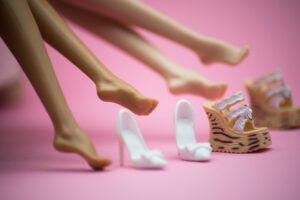One of the more, shall we say “annoying”, pelvic health dysfunctions is called pelvic organ prolapse (POP). Gravity plays somewhat of a larger role in this condition. This means when you’re walking, jogging, gardening, chasing those children (or grandchildren) around, or simply even doing household chores, the force of gravity often makes the symptoms of POP worse. Since we can’t change the force of gravity, this begs the question: what can we change to manage this condition?
Let’s back up and add some context to what POP is. The vagina, uterus, bladder, urethra, and rectum are all considered pelvic organs and they are held in place by the pelvic floor muscles as well as layers of connective tissue (fascia, ligaments, etc). Pelvic organ prolapse (again, POP) is defined as the descent of one or more of the pelvic organs: the bladder into the front vaginal wall (cystocele), the rectum into the back vaginal wall (rectocele), the uterus or cervix into the vaginal canal, or the apex of the vagina into the vaginal canal. Not all prolapses are created equal, as there are varying degrees of severity depending on the organ that is descending as well as the distance it descends. Common risk factors include vaginal childbirth, chronic constipation, obesity, occupations or workout routines entailing heavy lifting, previous hysterectomy, and advancing age & menopause. Although POP can be a common condition, it’s not commonly discussed. When women do discuss their symptoms, they often report vaginal bulging (“I felt this strange thing in the shower…”), pelvic pressure (“it feels like I am sitting on an egg!”), low back pain, urinary incontinence, bleeding or discharge, and feeling unable to fully empty the bladder or rectum. Symptoms usually increase during the day with gravity-dependent positioning and are relieved with lying down.
Since life doesn’t stop for POP, this brings us back to the question of what can we change to manage this condition? One thing we can do is build a better house for those organs to reside in. Usually Dr. Google or a friend will recommend strengthening the pelvic floor muscles in order to reduce symptoms associated with POP. While this is partly true, one must consider the whole house in order to effectively work with POP. In other words, the floor is important, but so are the walls (in this case, deeper core muscles) and the roof (the beloved abdominal diaphragm). Considering the whole trunk is important in preventing too much downward pressure on the pelvic organs and pelvic floor. Usually this downward pressure stems from improper breathing (ie, holding the breath!) or even over-engaging the core muscles (if you squeeze a tube of toothpaste too hard, where does the toothpaste go?). Learning how to breathe is a hallmark in working with the pelvic floor. Not only does diaphragmatic breathing help reduce the load on the pelvic organs, but it naturally coordinates with the pelvic floor and the deeper core muscles in order to protect what mother nature has set up for us.
Next time you lift that laundry basket, try the Blow Before You Go (BBYG) technique. In other words, start an exhale before you start the task at hand. It goes something like this: Inhale through the nose, allowing the belly to expand without forcing it. Exhale through pursed-lips (as if you’re blowing a pinwheel to make it move) and lift the laundry basket while at the same time allowing the belly to gently decompress while air gets slowly expelled from the lungs and out through the lips. Don’t worry if you don’t perfect it upon your first try. Coordinating the exhale with movement takes time, practice, and patience.
Contact our pelvic health specialist, Kelsea Cannon, PT to get your POP questions answered!






